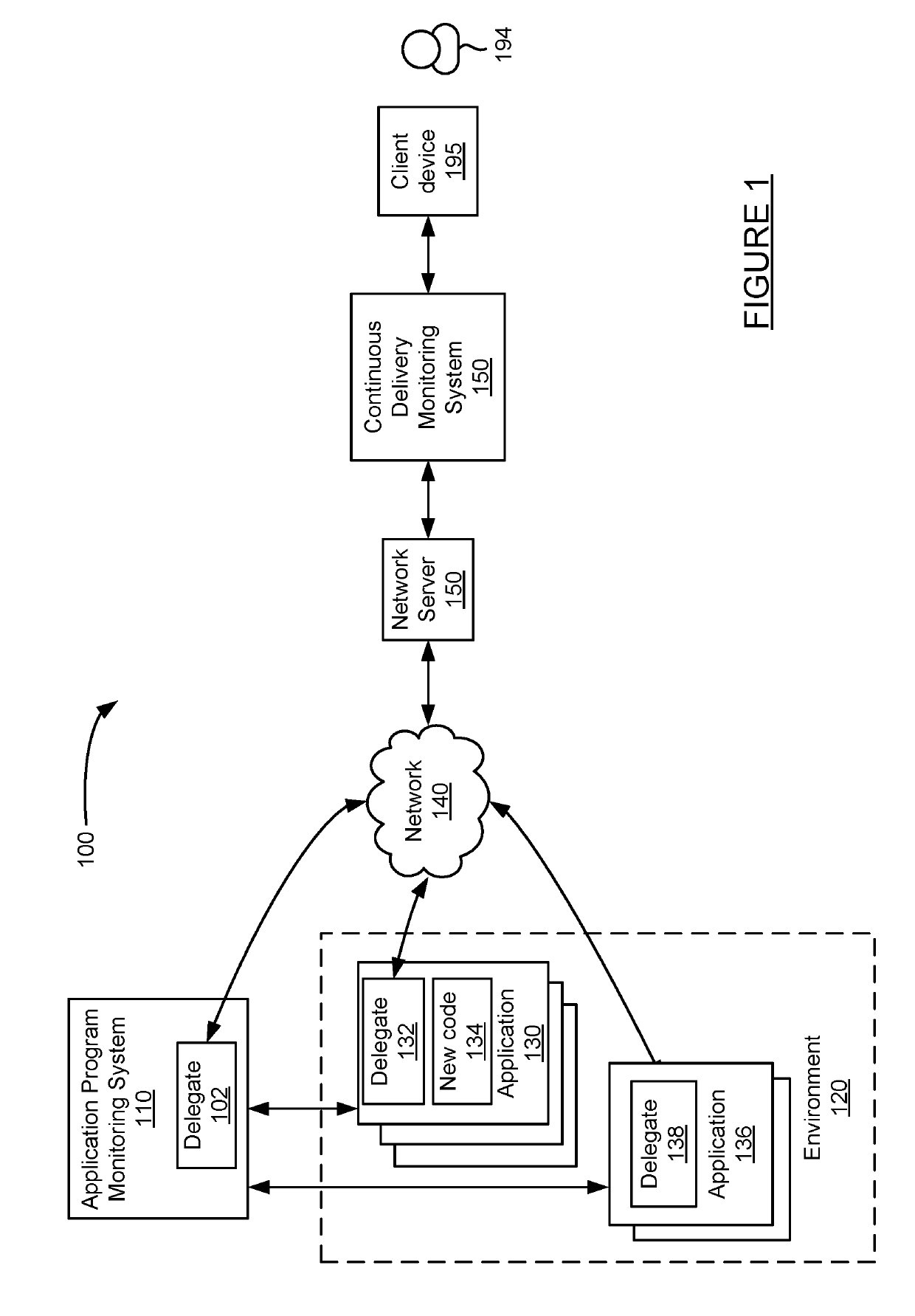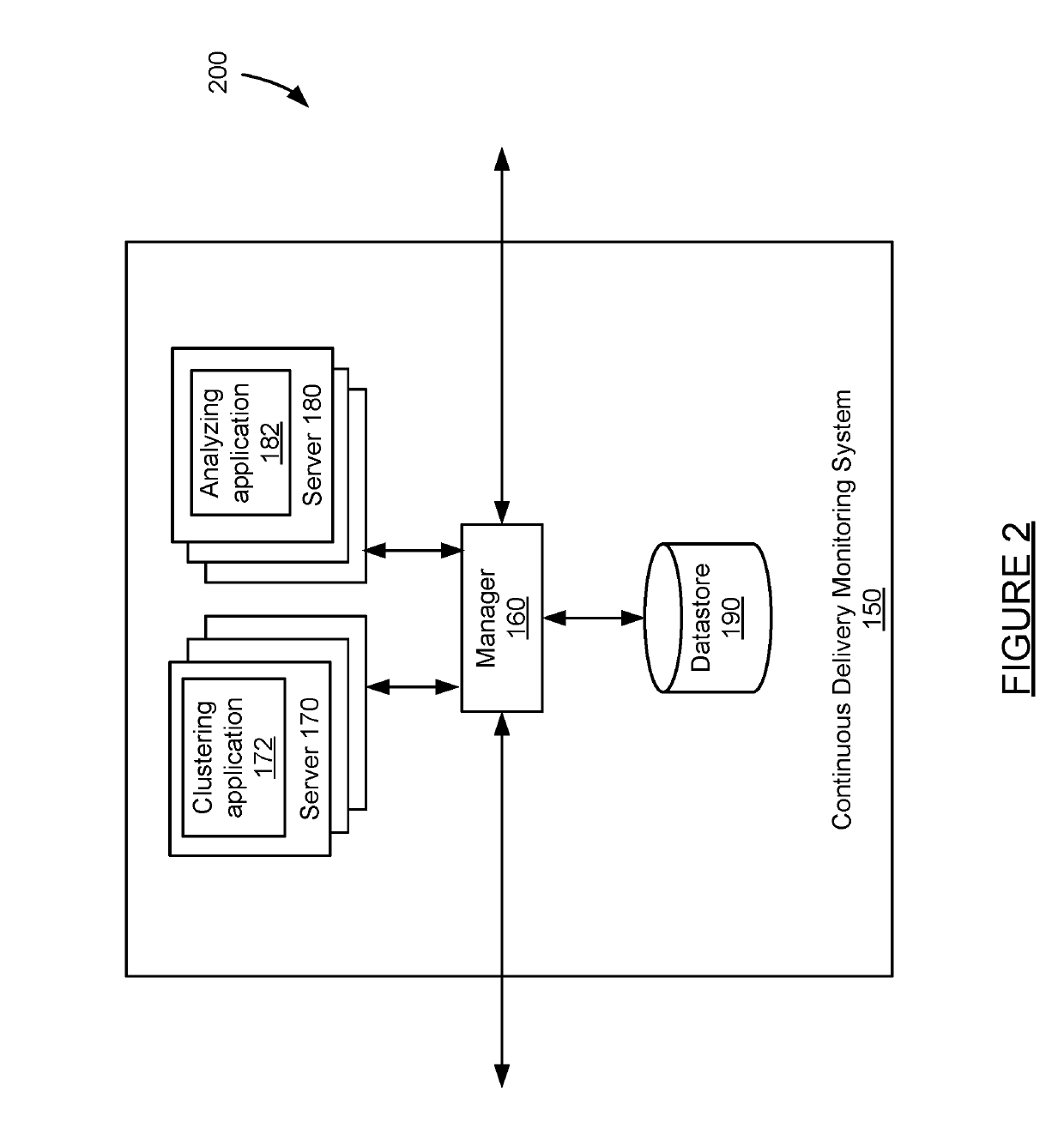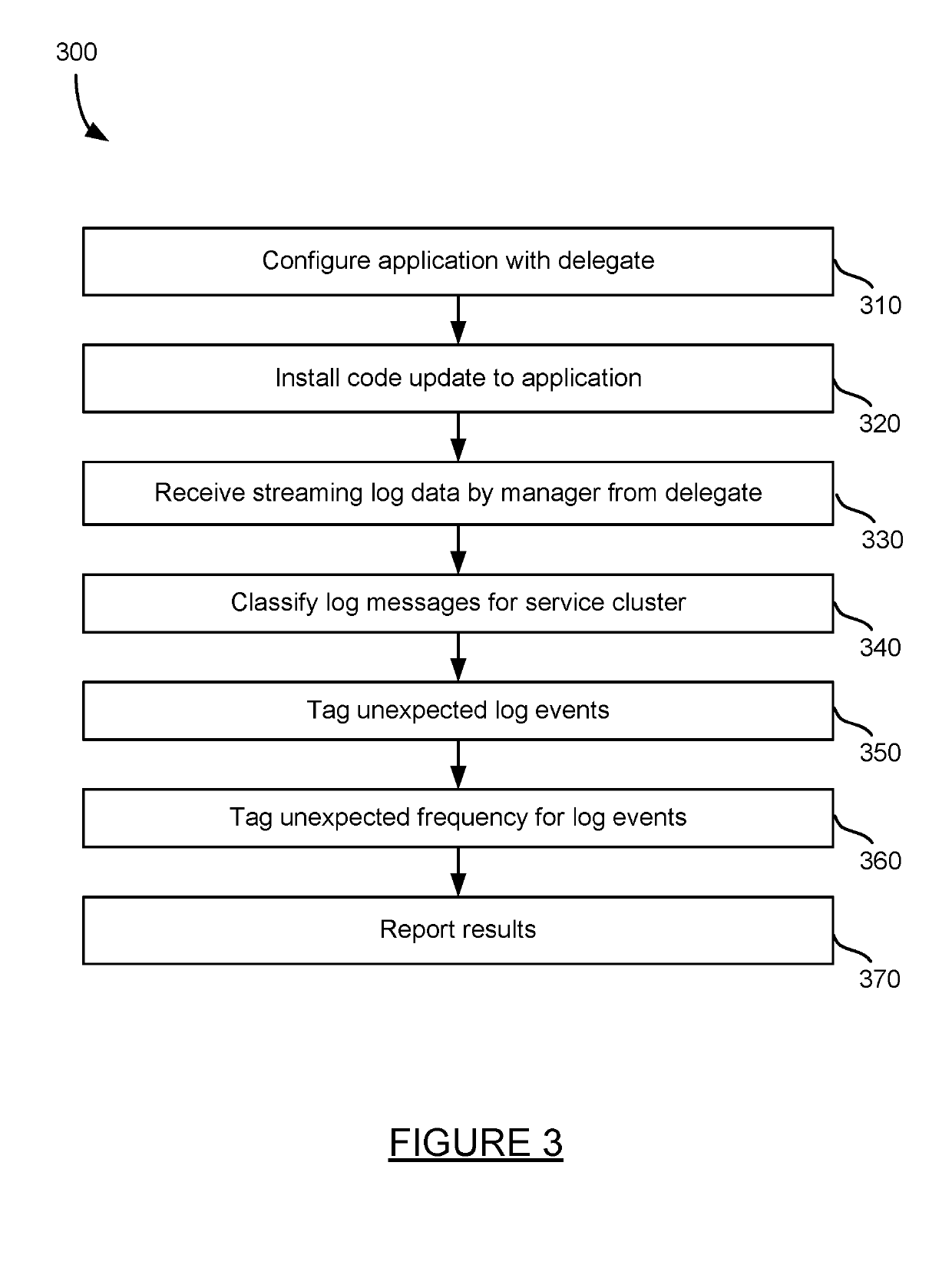Service regression detection using real-time anomaly detection of log data
a service regression and log data technology, applied in the field of service regression detection using real-time anomaly detection of log data, can solve the problems of inefficient and time-consuming, inability to detect failures, and often arise unforeseen errors and bugs that need to be dealt with by software engineers, so as to achieve the effect of very quickly detection of failures
- Summary
- Abstract
- Description
- Claims
- Application Information
AI Technical Summary
Benefits of technology
Problems solved by technology
Method used
Image
Examples
Embodiment Construction
[0014]The present system provides continuous delivery and service regression detection in real time based on log data. The log data are clustered based on textual and contextual similarity and can serve as an indicator for the behavior of a service or application. The clusters can be augmented with the frequency distribution of its occurrences bucketed at a temporal level, such as by one or more minutes, hours, or some other period of time. Collectively, the textual and contextual similarity clusters serve as a strong signature (e.g., learned representation) of the current service data and a strong indicator for predicting future behavior. Machine learning techniques are used to generate a signature from log data to represent the current state and predict the future behavior of the service at any instant in time. The learned representation or signature can then be used to predict service regressions either in functionality or performance starting at deployment time and extending bey...
PUM
 Login to View More
Login to View More Abstract
Description
Claims
Application Information
 Login to View More
Login to View More - R&D
- Intellectual Property
- Life Sciences
- Materials
- Tech Scout
- Unparalleled Data Quality
- Higher Quality Content
- 60% Fewer Hallucinations
Browse by: Latest US Patents, China's latest patents, Technical Efficacy Thesaurus, Application Domain, Technology Topic, Popular Technical Reports.
© 2025 PatSnap. All rights reserved.Legal|Privacy policy|Modern Slavery Act Transparency Statement|Sitemap|About US| Contact US: help@patsnap.com



